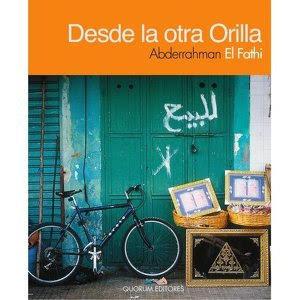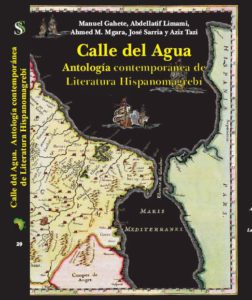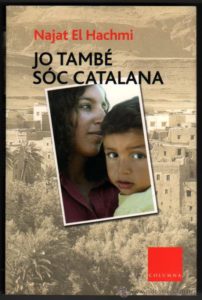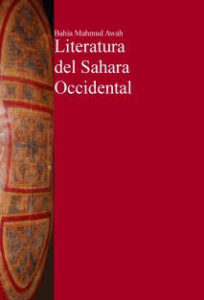Gonzalo Fernandez Parilla is an associate professor of Arabic language and literature at University Autónoma of Madrid and director of the Department of Arabic and Islamic Studies. Parilla is also is the author of a history of modern Moroccan literature, La literatura marroquí contemporánea and he has translated the works of many Moroccan writers.
In a short essay published in 2004, “Emigración y literatura” (Migration and Literature) in Atlas 2004 de la inmigración marroquí en España I dared to make a prediction when I wrote:
“Tras ¿Dónde estás Ahmed?, el siguiente eslabón en la imparable evolución del reflejo literario del hecho migratorio marroquí a España llegará cuando se manifieste esa generación beur española que está a punto de expresarse, cuando Ahmed deje de ser un mero título de un libro para convertirse en el autor de la obra, en la que puede que nos hable casi seguro de cuestiones relacionadas con las peripecias migratorias de su familia para muy pronto hablarnos de lo que nos hablaría cualquier otro escritor español.”
“After ¿Dónde estás Ahmed? (Where are you, Ahmed? [2000]), the next step in the unstoppable reflection of Moroccan migration to Spain will be achieved when a Spanish beur generation speaks out, and this is about to happen. Then Ahmed will go from being a mere title to becoming the author; the author of a book in which he will probably deal with the migratory ordeals of his family to very soon after start writing about what any other Spanish writer writes about”
Fifteen years later, I realize how wrong I was. I was not able to imagine that Ahmed would go on to write in Catalan, instead of in Spanish, and that instead of an Ahmed writing, it would be a Leila or a Najat. Now it seems just so obvious that the place where this was going to happen would be in Catalan society, and that only a woman (from the Rif region) could make it.
Together with “national” Arabic and Amazigh literatures, it is well known that Morocco generated an important postcolonial literature in French. With authors such as Driss Chraïbi, who in 1954 published influential and controversial Le passé simple (“The Simple Past”) and Tahar Ben Jelloun who, in 1987, won the prestigious French literary award the Goncourt with La nuit sacré (“The Sacred Night”). The last of these many authors is Leila Slimani, who just won the Goncourt with in 2016 Chancon douce (“Lullaby”). These Moroccan authors writing in French since the mid-20th century constitute a lively postcolonial Francophone literature, and their merits are recognized both in Morocco and France. A similar- although more recent phenomenon is taking place with Moroccan authors writing in English, as with Laila Lalami with novels such as The Moor’s Account.
Though less known, Morocco has also produced literature in Spanish since colonial times. However, in general, Hispanophone Maghribi authors have not yet made inroads into the Spanish literary scene and academia, nor in the Moroccan one. This double absence derives on the one hand from the particularities of this colonial context, but it is also related to the general absence of Hispanophone literatures within the field of postcolonial studies, where issues related to the modern Spanish colonies are not often discussed. Nonetheless, things started to change when authors such as novelist Mohamed Bouissef Rekab or poet Abderrahman El Fathi, with the eloquent title of Desde la otra orilla (“From the Other Shore”), started to publish in Spain. [1]

In the title of this paper there is an echo of another title, of a book by Leila Karrouch, De Nador a Vic (“From Nador to Vic”), published in Catalan in 2004. De Nador a Vic evokes the life-itinerary of the author as a migrant child from the city of Nador, in the Rif region in the north of Morocco, to Vic, a town in the Catalan region of Spain. This has been the life-itinerary of many Moroccans. In addition to this geographical displacement, in the title there is a time shift. It alludes as well to the condition of the north of Morocco as a former territory colonized by Spain. Moreover, it also signals a subaltern indigeneity of Berbers/Amazigh within Morocco, which is even more pronounced in the case of the Riffians.

Last but not least, there is a conceptual shift- since in the span of a century we have passed, supposedly, from a colonial mentality and from a colonial indigeneity to migration flows, and to a new status of former colonized subjects as immigrants, and to new indigeneities. [2]
Until recently, these literatures have inhabited a kind of a limbo, symbolized by the in-between space of the Strait of Gibraltar. Accordingly, these authors have been anthologized in books with titles such as Inmenso Estrecho (Immense Strait of Gibraltar) that incarnate the idea of separation of those eight miles of water, also known in the field as Calle del agua (street of water).

However, a recent anthology of poetry written in Spanish by Moroccans, released in 2016 with the title of Estrecheños, vindicates that interstitial space in new ways. A natural border is therein converted into a new identity, estrecheños, a demonym meaning citizens from the strait, from the Straits of Gibraltar. Thus, Estrecheños becomes a new poetic, metaphorical nationality for those Moroccans writing in Spanish, who are actually neither part of the Spanish literary canon nor of the Moroccan.
Despite the increasing importance of authors writing in Spanish in Morocco, the real triggering of a new literature written by Moroccans in Spanish (and Catalan) arrived with migration, and constitutes a diaspora that is intimately connected with the former condition of the region as a Spanish colony. The year 2004 can be established as a starting point, when together with Leila Karrouch’s De Nador a Vic (“From Nador to Vic”), Najat El Hachmi published Jo també soc catalana (“I Too Am Catalan”). It is worth mentioning that both authors write in Catalan. If we add the author Said El Kadaoui, with Límites y fronteras (2008) we realize that there is indeed something very specific of the Catalan context that deserves to be addressed.

Things also started to change when critics paid attention to these literatures. Even if it is a recent phenomenon, and ambivalent and problematic within Moroccan and Spanish contexts, there has been a remarkable output of critical and academic publications that try to explain and name these new literatures, halfway between the colonial and the diaspora, half-way between Morocco and Spain. The titles of the books, such as Entre las 2 orillas: Literatura marroquí en lengua española (2007), Calle del agua: Antología contemporánea de literatura hispano-magrebí (2008) and ¡Hay moros en la costa! Literatura marroquí fronteriza en castellano y catalán (2014), show the still-fluctuating status of these literatures, called alternately “Moroccan literature in Spanish”, “Hispanomaghrebi literature” or “Border Moroccan literature in Spanish and Catalan”. Curiously, denominations such as Chicano in the US context or Beur in the Francophone context have still not been coined.
So far the only author who has overcome this situation of marginality has been the aforementioned Najat El Hachmi. In 2008 she won the prestigious Ramon Llull literature award with L’ultim patriarca (“The Last Patriarch”), a true turning point from a history of invisibility. In her very first book, Jo també sóc catalana, (“I Too Am Catalan”), El Hachmi made a strong statement, wondering how long it takes to become indigenous or a local. She was desperately yelling: Here I am, I won the most important literary prize in Catalan and still you ask me about my origins, about my impressive command of the language…why? Because of my hair, my skin, my religion, my name?
In Migrant Cartographies Merolla and Ponzanesi have enquired: “When does a migrant stop being migrant?”, and James Clifford has asked: “How long does it take to become indigenous?” meaning, again, local. In the Spanish and European political arenas there are nowadays other confluent discourses on indigeneity. For instance, the town of Spain where Karrouch and El Hachmi’s families lived was the cradle of a racist, ultranationalist, xenophobic and Islamophobic movement, Plataforma per Catalunya, claiming “primero los de casa,” i.e., “locals/indigenous/our people first”. Among many other nasty and despicable comments, the leader of this movement argued that it is not accurate to say that 300,000 Catalans observe the Ramadan, since they are not Catalonians but moros (Moors/Muslims) and “will remain so wherever they live”.
The works of El Hachmi address the difficulties of leaving aside an original indigeneity to become newly and fully indigenous to somewhere else- this is what she has termed “pornographic ethnicity”. Her works deal as well with the powerful reluctance of our societies to assume a new reality, and to acknowledge that many of the current migrations are a consequence of European and North American economic, political and military interventions in those territories. From a postcolonial perspective, the Spanish case is at least particular. It is atypical in that, so far, the most relevant postcolonial literature developed in Spain is in Catalan. It is as well atypical in that the writers are mostly women, given that the postcolonial, as the nationalist, has been a very masculine milieu. The existence of a well-articulated Sahrawi literature written in Spanish, with critical titles such as La literatura del Sáhara Occidental (2009), further complicates the emotional entanglements of this complex postcolonial condition. [3]

In her novel La filla estrangera (“The foreign daughter”, 2015), El Hachmi deals specifically with the transformational power of migration. The protagonist ends up being not only a stranger/intranger for the host society, but also for her own mother. Moreover, The foreign daughter is also a novel about the importance of language, the importance of languages and mother tongues, about the relevance of the words we use. Her last book Mare de llet i mel (Mother of milk and honey, 2018), including a beautiful metaphor on mother dough, revolves around the power of language (and the tongues we inhabit), the power of mothers, and the power of mother tongues.
Notes:
[1] See Casielles, Laura and Gonzalo Fernández Parrilla. 2017. ‘Spain.’ In Oxford Handbook of the Arab Novelistic Traditions, edited by Waïl S. Hassan, 665-677. Oxford: Oxford University Press.
[2] See Fernández Parrilla, Gonzalo. “De indígena a catalana: representaciones textuales entre lo colonial y lo postcolonial”. Alteridades imaginadas. Ed. Ángeles Ramírez. Barcelona: Bellaterra, 2014.
[3]


Leave A Comment